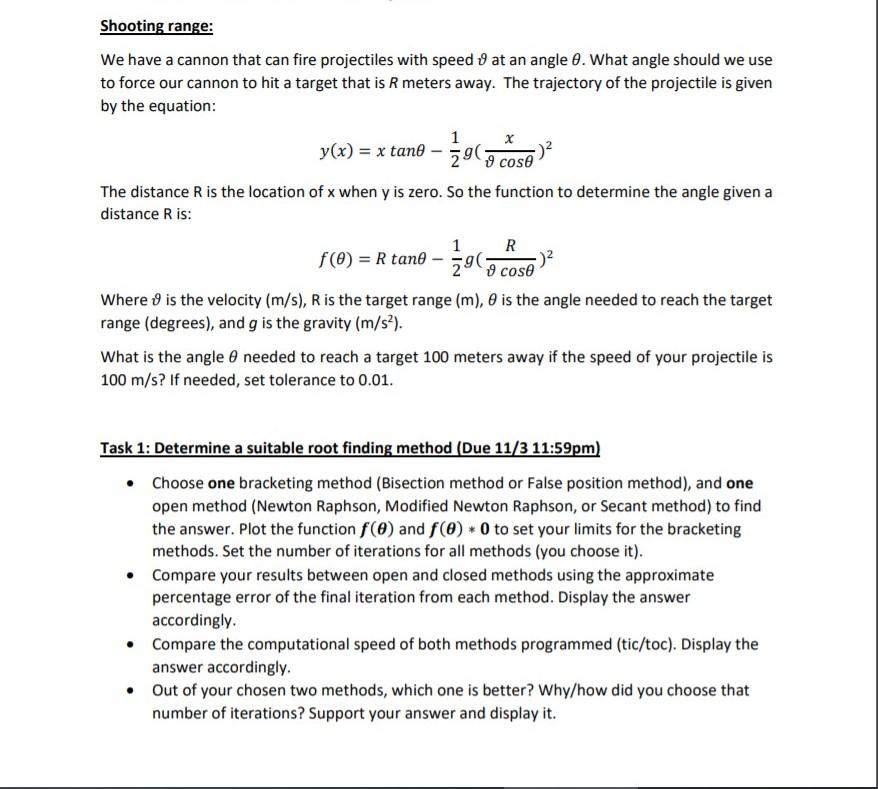Answered step by step
Verified Expert Solution
Question
1 Approved Answer
pls can someone help me with this using mathlab. thanks Shooting range: We have a cannon that can fire projectiles with speed 9 at an
pls can someone help me with this using mathlab.
thanks


Step by Step Solution
There are 3 Steps involved in it
Step: 1

Get Instant Access to Expert-Tailored Solutions
See step-by-step solutions with expert insights and AI powered tools for academic success
Step: 2

Step: 3

Ace Your Homework with AI
Get the answers you need in no time with our AI-driven, step-by-step assistance
Get Started


